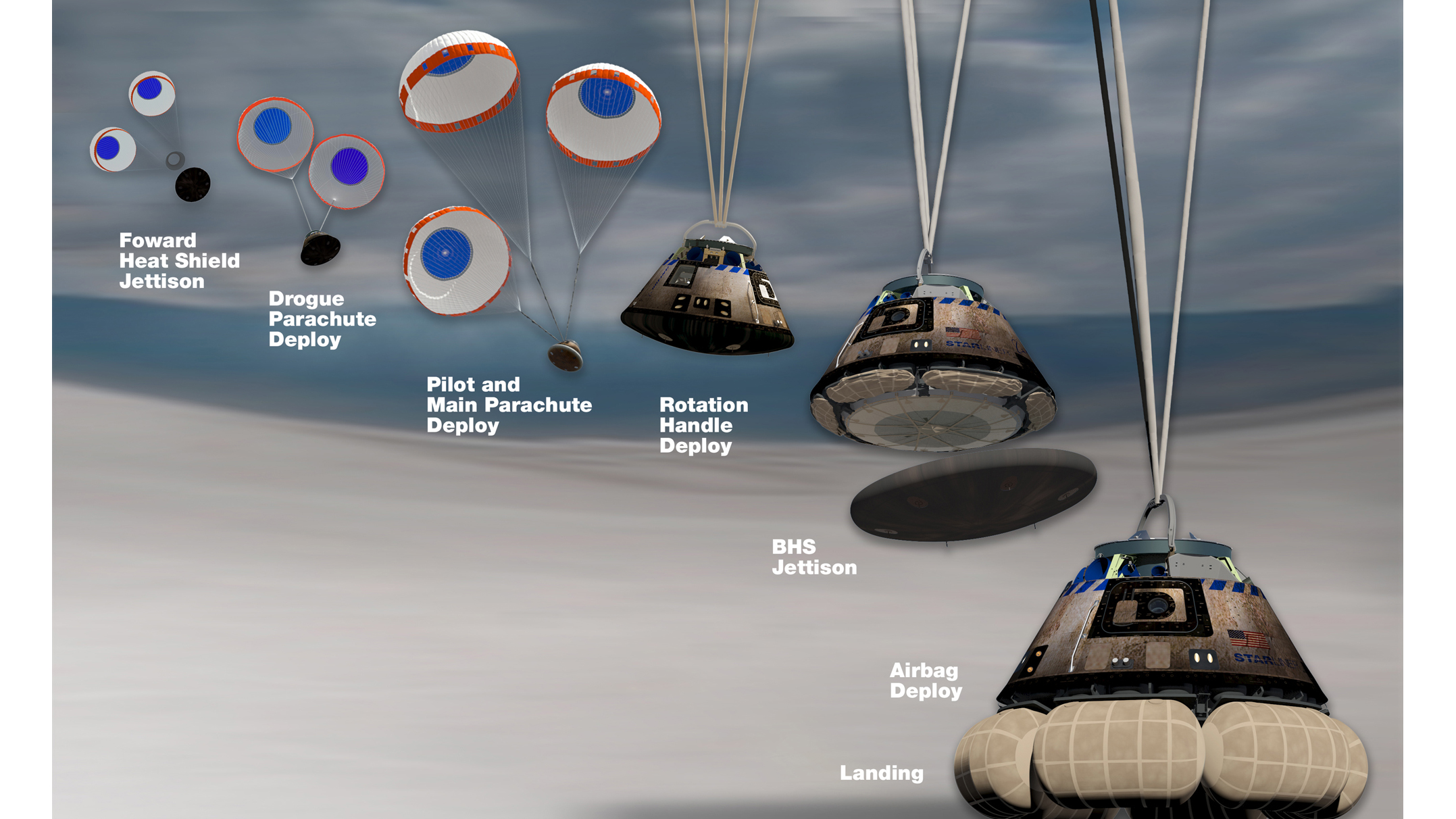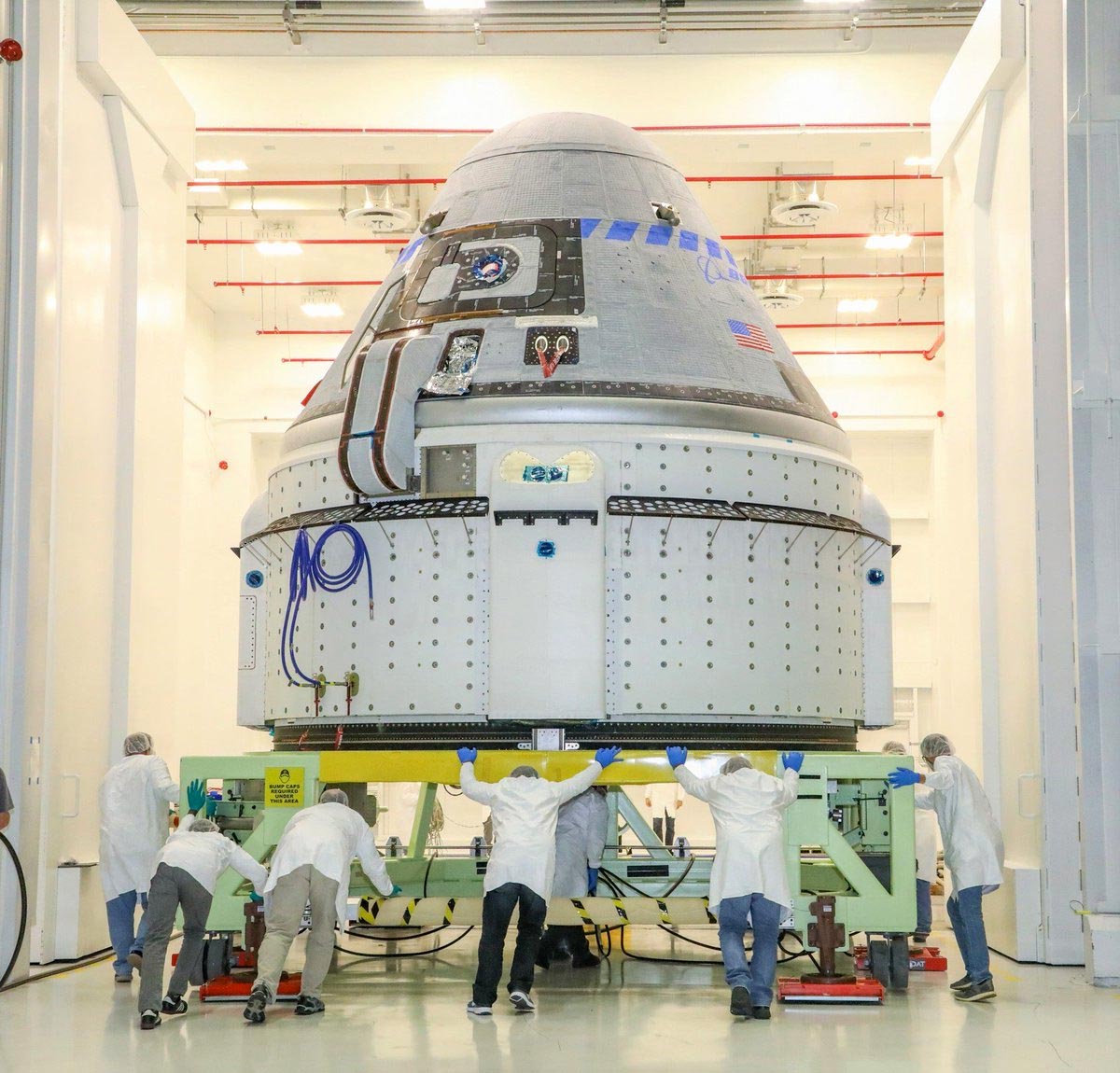What is Starliner: Boeing's Advanced Spacecraft For Human Spaceflight? Starliner is a reusable spacecraft developed by Boeing to transport astronauts to and from low Earth orbit as part of NASA's Commercial Crew Development program.
Editor's Notes: Starliner: Boeing's Advanced Spacecraft For Human Spaceflight has published today date, due to its importance we decided to re-share this article for our valued audience.
Our team has taken the time to research and gather information to create this guide to help our target audience make the right decision.
FAQs
This FAQ section provides information and answers to frequently asked questions regarding Starliner: Boeing's Advanced Spacecraft For Human Spaceflight. Our aim is to provide clarity and enhance understanding about this advanced spacecraft.

Starliner’s Return Delayed Again: What’s Next for the Spacecraft? - Source scitechdaily.com
Question 1: What are the key features of Starliner?
Starliner is a reusable spacecraft designed to transport humans and cargo to low-Earth orbit destinations, including the International Space Station. It features a sleek and aerodynamic design, with advanced avionics and navigation systems. Starliner is capable of autonomous docking and undocking maneuvers, enhancing mission flexibility and safety.
Question 2: How does Starliner differ from other crewed spacecraft?
Starliner is unique in several aspects. It incorporates a passive abort system, providing an additional layer of safety in the unlikely event of a launch emergency. Furthermore, Starliner utilizes a reusable service module, reducing operational costs and increasing mission efficiency.
Question 3: What are the safety measures implemented in Starliner?
Passenger safety is paramount in Starliner's design. The spacecraft is equipped with redundant systems, ensuring critical functions can be maintained even in the event of component failures. Advanced software algorithms monitor the spacecraft's health and performance, providing real-time alerts to the crew and mission control.
Question 4: How will Starliner be used in future space missions?
Starliner is poised to play a pivotal role in NASA's Artemis program, aiming to return humans to the Moon by 2024. The spacecraft will be utilized to transport astronauts and supplies to the Lunar Gateway, a future space station that will orbit the Moon. Starliner's versatility also extends to commercial space tourism and microgravity research missions.
Question 5: What is the timeline for Starliner's development and deployment?
Starliner's development has been ongoing for several years, with the first uncrewed test flight successfully launched in 2022. Crewed flight tests are scheduled for the near future, followed by operational missions to the International Space Station. Starliner's deployment will significantly enhance human spaceflight capabilities and contribute to the advancement of space exploration.
Question 6: How can I stay updated on the latest developments of Starliner?
To remain informed about Starliner's progress and upcoming missions, official sources such as NASA's website and Boeing's press releases provide up-to-date information. Additionally, reputable space news outlets and industry publications regularly cover Starliner's development and utilization.
This FAQ section provides a comprehensive overview of Starliner's features, safety measures, and future applications. As the spacecraft undergoes further development and deployment, we can anticipate its significant contributions to human space exploration and the expansion of our presence beyond Earth's orbit.
For more detailed information, please refer to official sources and follow the project's progress through reputable news channels.
Tips
Boeing's advanced spacecraft, Starliner, promises to revolutionize human spaceflight. Its innovative design and advanced technologies offer numerous possibilities for exploration and scientific discovery. Here are some key tips for optimizing the use of Starliner for your specific mission objectives:

Starliner Spacecraft's Landing on Sunday a Critical Moment for Boeing - Source www.space.com
Tip 1: Leverage Adaptable Crew Module
Starliner's crew module offers exceptional versatility, accommodating up to 7 astronauts or reconfiguring for cargo. This flexibility enables tailored mission designs, allowing for various research, exploration, and logistics activities.
Tip 2: Utilize Docking Interface
Starliner's docking interface allows seamless integration with the International Space Station and future space habitats. This capability facilitates crew exchange, experiments, and maintenance, extending the spacecraft's operational capabilities.
Tip 3: Take Advantage of Orbital Maneuvering System
Starliner's powerful orbital maneuvering system provides precise control during rendezvous, insertion, and departure maneuvers. This flexibility enables efficient mission planning and execution, optimizing time and fuel consumption.
Tip 4: Utilize Flexible Power System
Starliner features a robust power system that can handle high-energy demands for extended periods. The spacecraft's efficient use of solar arrays and batteries ensures reliable operation, even in challenging conditions.
Tip 5: Capitalize on Advanced Life Support Systems
Starliner's advanced life support systems provide a comfortable and safe environment for astronauts. These systems regulate temperature, humidity, air quality, and waste management, ensuring the well-being of the crew.
Summary: By leveraging these tips, you can maximize the capabilities of Boeing's Starliner for your specific mission objectives. Its versatility, adaptability, and advanced technologies make it an ideal platform for pushing the boundaries of human spaceflight.
Starliner: Boeing's Advanced Spacecraft For Human Spaceflight
Starliner, Boeing's cutting-edge spacecraft, represents a significant advancement in human spaceflight, embodying innovation, safety, and versatility. Here are six key aspects that define Starliner's remarkable capabilities:
- Reusable: Reduces mission costs and enables multiple flights.
- Autonomous: Advanced systems handle complex tasks, minimizing crew workload.
- Docking: Precision maneuvers for seamless connection to orbiting space stations.
- Crew Capacity: Accommodates up to seven astronauts, expanding mission possibilities.
- Advanced Life Support: Ensures crew safety and well-being during extended missions.
- Multi-Mission Capable: Adaptable for various missions, from research to commercial ventures.

Starliner’s Final Countdown: New Thruster Testing Before Earth Return - Source scitechdaily.com
Starliner's reusability is a game-changer, lowering the financial burden of space exploration and allowing for more frequent missions. Its autonomous capabilities free up astronauts to focus on mission-critical tasks, enhancing safety and efficiency. The spacecraft's docking precision enables seamless integration with orbiting stations, facilitating crew transfer and scientific experiments. Its ability to accommodate multiple astronauts expands the scope of human spaceflight, allowing for larger-scale expeditions and diverse research teams. Advanced life support systems ensure crew comfort and well-being, enabling longer missions and supporting future deep-space exploration. Starliner's multi-mission capability showcases its versatility, catering to a wide range of space endeavors, from servicing satellites to conducting commercial research. As human spaceflight continues to evolve, Starliner stands as a testament to Boeing's commitment to innovation and a promising platform for future space exploration.

Boeing’s Starliner won’t fly astronauts this summer after discovering - Source me.mashable.com
Starliner: Boeing's Advanced Spacecraft For Human Spaceflight
Designed to transport crews to and from the International Space Station (ISS) and other low-Earth orbit destinations, the Starliner spacecraft is a cornerstone of Boeing's contributions to human spaceflight. Its development and capabilities are inextricably linked to the broader mission of advancing space exploration and expanding our understanding of the cosmos.

Boeing’s CST-100 Starliner spacecraft advances flight test with - Source tricksfast.com
The Starliner's advanced design incorporates cutting-edge technologies, including a reusable capsule, a flexible mission module, and an autonomous docking system. These features enable efficient and cost-effective operations, paving the way for more frequent and accessible space missions. The spacecraft's spacious interior and advanced life support systems provide a comfortable and safe environment for astronauts, allowing them to conduct extended missions in space.
The successful deployment and testing of the Starliner in recent years have demonstrated its reliability and capabilities. Its integration into NASA's Artemis program, which aims to establish a sustainable human presence on the Moon, underscores its significance as a platform for future space exploration endeavors. The Starliner's ability to transport both crew and cargo to the ISS and beyond will play a crucial role in supporting scientific research, technology development, and the growth of space-based industries.
The development and utilization of the Starliner represent a pivotal chapter in human spaceflight history. Its advanced capabilities and versatility position it as a cornerstone of Boeing's contributions to the field and a catalyst for unlocking new frontiers in space exploration.
| Key Features | Significance |
|---|---|
| Reusable Capsule | Reduces costs and enables multiple missions |
| Flexible Mission Module | Adaptable for various payloads and mission requirements |
| Autonomous Docking System | Enhances safety and efficiency during spacecraft maneuvers |
| Spacious Interior | Provides a comfortable and productive environment for astronauts |
| Advanced Life Support Systems | Sustains astronauts for extended periods in space |
Conclusion
The Starliner spacecraft stands as a testament to Boeing's unwavering commitment to human space exploration. Its advanced design, versatility, and proven capabilities make it an indispensable platform for future space missions, including those under NASA's Artemis program. As the world sets its sights on establishing a sustainable presence on the Moon and beyond, the Starliner will play a pivotal role in pushing the boundaries of human ingenuity and knowledge.
The successful development and deployment of the Starliner not only represent a triumph of engineering but also inspire generations to come. Its legacy will continue to shape the future of space exploration, enabling scientific breakthroughs, technological advancements, and the realization of humanity's dreams to explore the vast expanse of the cosmos.